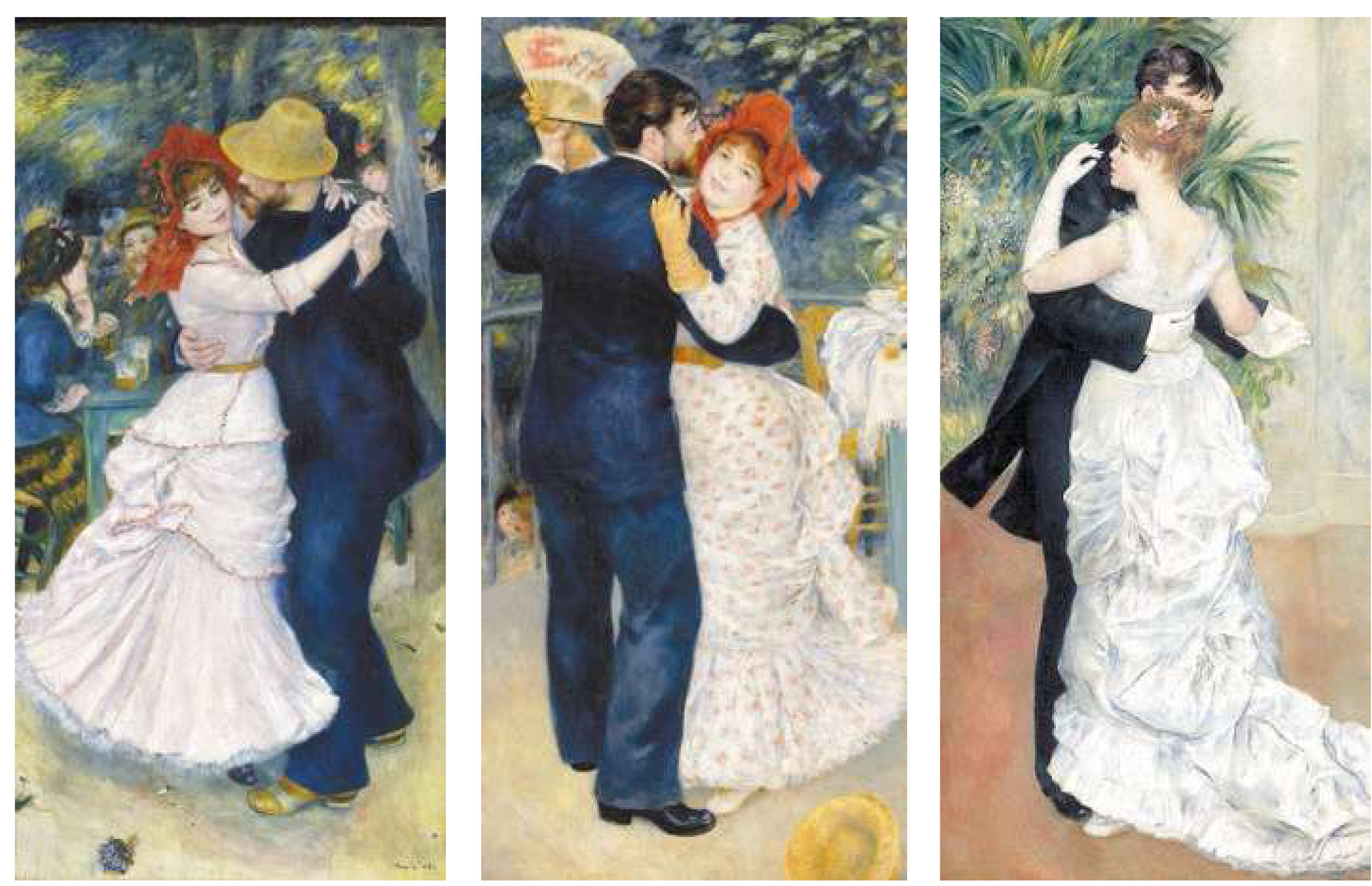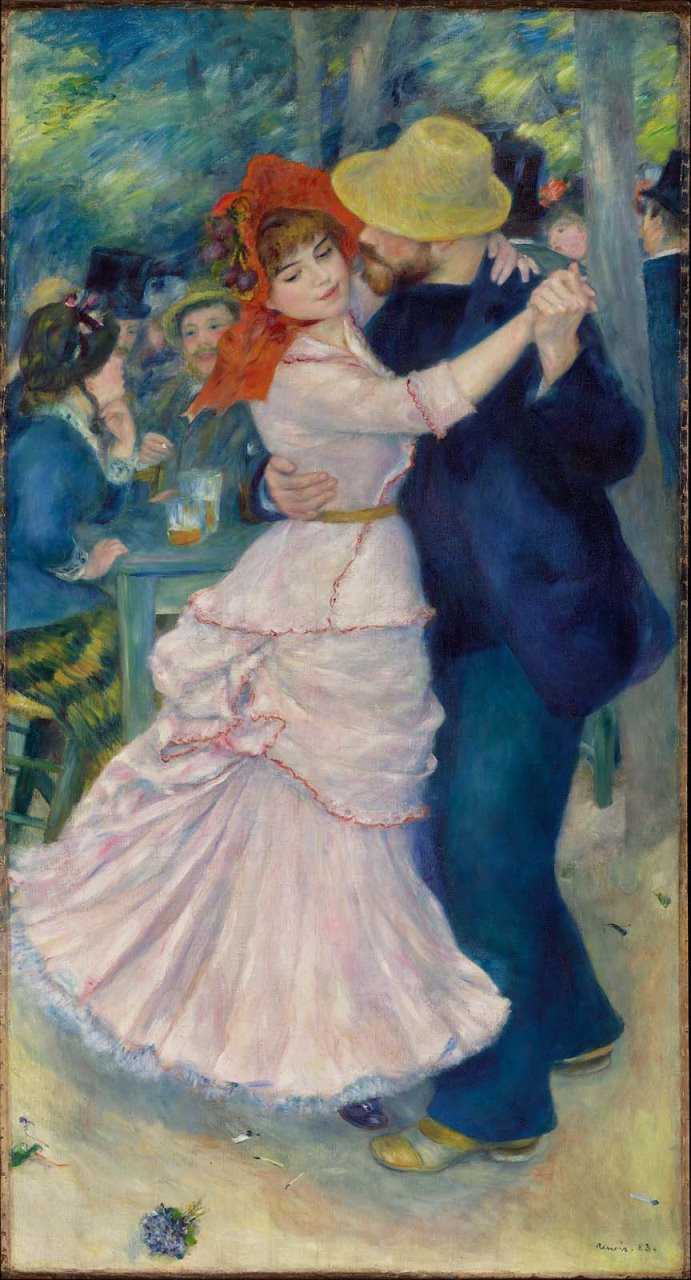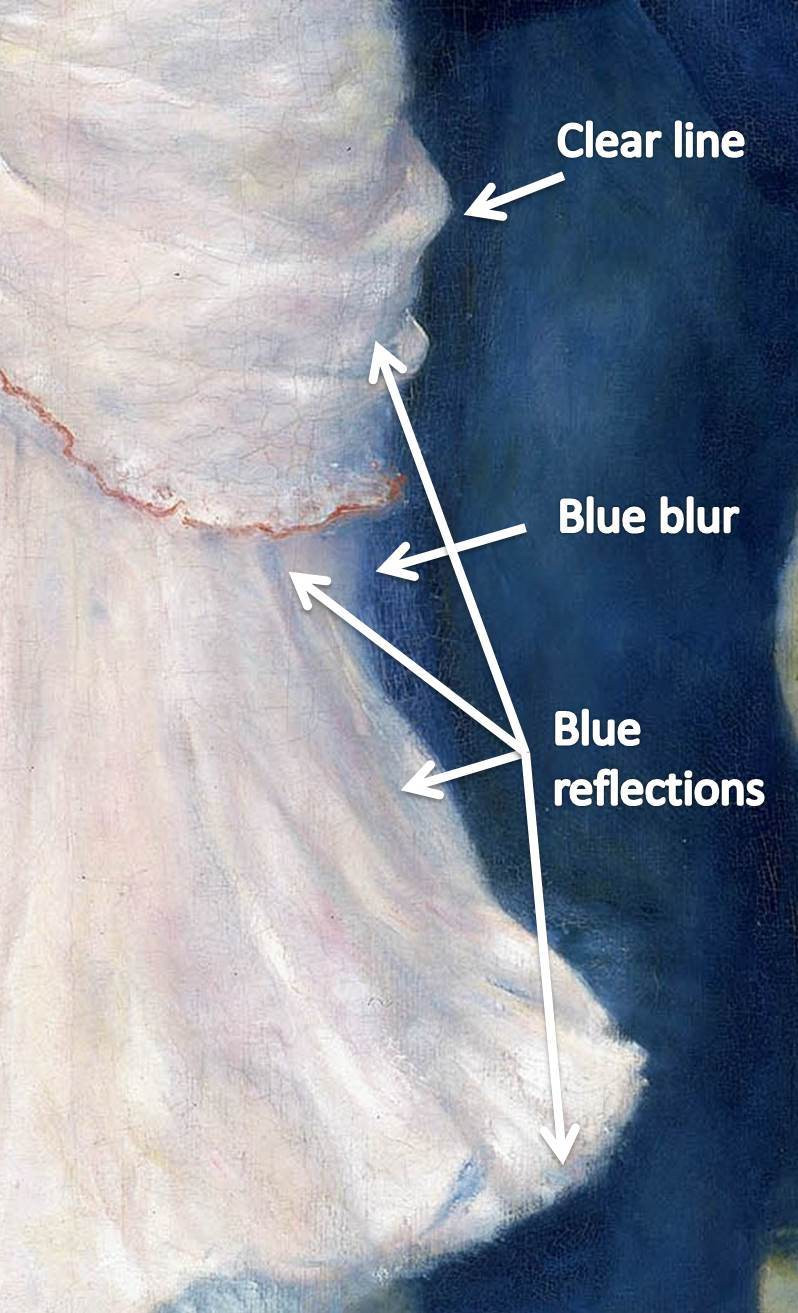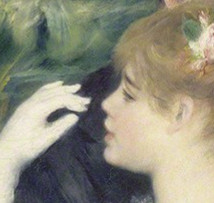Pierre-Auguste Renoir, a master of Impressionism, is celebrated for his ability to capture the vibrancy of life and human emotion on canvas. Among his most captivating works are a series of dance paintings, particularly those depicting scenes from the countryside. These paintings, including “Dance at Bougival” and “Dance in the Country,” offer more than just picturesque depictions of social gatherings; they are insightful explorations of passion, social dynamics, and the subtle nuances of human relationships in 19th-century France. Let’s delve into the world of Renoir’s “Dance in the Country” and its counterparts to uncover the stories hidden within the brushstrokes.
The Allure of Renoir’s Dance Paintings: Setting the Scene
Renoir’s dance series notably features three paintings: “Dance at Bougival” (1883), “Dance in the Country” (1883), and “Dance in the City” (1883). While each painting stands alone as a masterpiece, viewing them together reveals a fascinating comparative study of social interactions and emotional expressions in different settings. The contrast between the lively, informal atmosphere of country dances and the more restrained elegance of a ballroom dance is immediately apparent. Renoir masterfully uses setting, body language, and subtle details to convey distinct narratives within each scene. The country dances, in particular, are imbued with a sense of freedom and raw emotion, contrasting with the perceived formality of their city counterpart.
Dance in the Country: A Closer Look at Passion and Nuance
“Dance in the Country” (also known as “Country Dance”) immediately draws the viewer into an intimate moment between a couple on the dance floor. The painting is rich with details that speak volumes about the dynamics between the dancers. The man’s firm grip on his partner’s hand suggests a confident, perhaps even possessive, demeanor. Yet, the woman’s gloved hand and the fan she holds onto hint at a degree of independence and reservation. Despite the passionate proximity – his lips nearing her cheek, his gaze fixed on her face – she maintains a subtle barrier.
 Close-up view of the couple dancing in Renoir's Dance in the Country, highlighting the man's passionate gaze and the woman's subtle reservation.
Close-up view of the couple dancing in Renoir's Dance in the Country, highlighting the man's passionate gaze and the woman's subtle reservation.
However, Renoir cleverly reveals a flirtatious undercurrent in the woman’s posture. Notice how her dress is painted seamlessly against the man’s leg, blurring the lines between them. The subtle blue reflection on her dress, almost disappearing where it meets his dark suit, emphasizes their closeness. The shaded vertical border of her dress further suggests it’s being pressed against his leg. Despite this physical intimacy, her hand rests lightly on his shoulder, not embracing him, and her eyes subtly glance towards the viewer, creating a sense of playful awareness and shared complicity. This complex interplay of closeness and distance, passion and reservation, makes “Dance in the Country” a captivating study of flirtation and unspoken emotions.
Dance at Bougival: Wildness and Social Dynamics
Moving to “Dance at Bougival,” the atmosphere shifts to one that is arguably more dramatic and unrestrained. The background is alive with figures, suggesting a bustling social scene, yet there’s a discernible tension. The original article notes a higher proportion of men, hinting at a competitive social dynamic where women might feel “hunted.” This context adds layers to the interaction between the couple in the foreground.
 A dynamic couple in Renoir's Dance at Bougival, showcasing the man's casual attire and passionate embrace contrasted with the woman's averted gaze.
A dynamic couple in Renoir's Dance at Bougival, showcasing the man's casual attire and passionate embrace contrasted with the woman's averted gaze.
The man in “Dance at Bougival” presents a stark contrast to the gentleman in “Dance in the Country.” His attire is noticeably casual, bordering on unconventional for the time. This informality, combined with his forceful embrace and craned neck, exudes a raw, almost predatory energy. The woman, while averting her face, perhaps from an unwanted kiss, has her hand draped over his neck. This ambiguous gesture suggests a conflict between resistance and a degree of reciprocation.
The lower halves of their bodies further emphasize this tension. Unlike the blended forms in “Dance in the Country,” here, there is a distinct separation. The “blue blur” around them indicates movement and perhaps emotional turbulence, while clear lines and blue reflections suggest a distance, a lack of true connection despite the physical closeness.
 Detail of the lower bodies in Dance at Bougival, highlighting the blue blur of motion and the lines of separation between the dancers.
Detail of the lower bodies in Dance at Bougival, highlighting the blue blur of motion and the lines of separation between the dancers.
The woman’s gaze is directed downwards, towards a fallen flower on the floor. This detail becomes a powerful symbol – a discarded flower mirroring the man’s potential for fleeting affections, a reminder of past encounters, and a cautionary tale. Is she engaged to another? The ring on her finger, noticed by an astute observer, raises questions about commitment and propriety, adding another layer of complexity to her apprehension. She seems caught between desire and caution, a poignant representation of societal pressures and personal desires.
Dance in the City: Restrained Passion and Dreams
In “Dance in the City,” the setting shifts dramatically to a ballroom, characterized by “somber white columns, potted plants, controlled steps, and orchestrated music.” Initially, it might appear less passionate compared to the country scenes. The man is largely obscured, allowing the focus to fall on the woman.
 Elegant woman in Renoir's Dance in the City, with a subtle blush and dreamlike expression hinting at hidden desires.
Elegant woman in Renoir's Dance in the City, with a subtle blush and dreamlike expression hinting at hidden desires.
Despite the formal setting and implied restraint, Renoir subtly reveals the woman’s inner world. Her slightly parted lips and the evocative shadow play between her thumb and forefinger hint at a hidden yearning, a dream of a kiss that brings a blush to her cheeks. She and her partner are bound by social norms, yet her expression betrays a longing for something more passionate.
Her dress, cut off by the frame, becomes a metaphor for “passionate innocence,” an upward surge of emotion within a constrained environment. It suggests a depth of feeling that exists beneath the surface of ballroom etiquette.
Experiencing Renoir’s Dances: Invitation to Participate
Renoir’s “Dance” paintings, all life-size, are more than just observations; they are invitations. He invites us to step onto the dance floor, to become participants in these unfolding narratives. Each painting offers a glimpse into a story, allowing viewers to construct their own interpretations and connect with the emotions portrayed.
Renoir’s genius lies in his ability to capture these fleeting moments with such depth and nuance. His “Dance in the Country,” along with its companion pieces, is not merely a depiction of dance; it’s a window into the complexities of human relationships, social dynamics, and the timeless dance of passion and restraint. Returning to these paintings is like revisiting a cherished memory, each viewing revealing new layers of meaning and emotional resonance.
